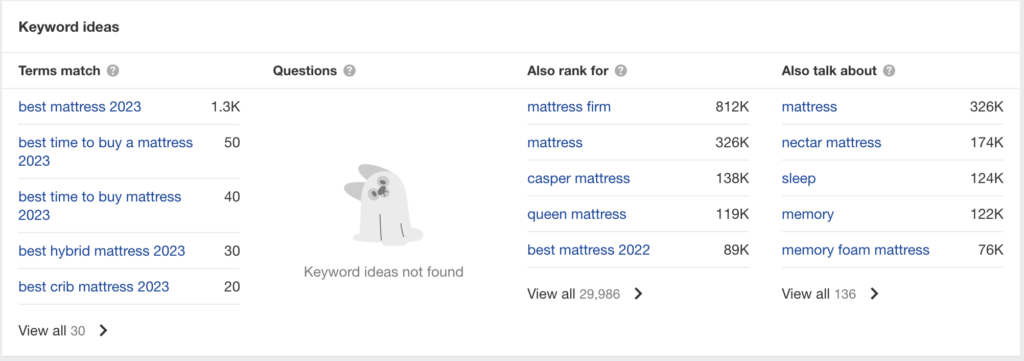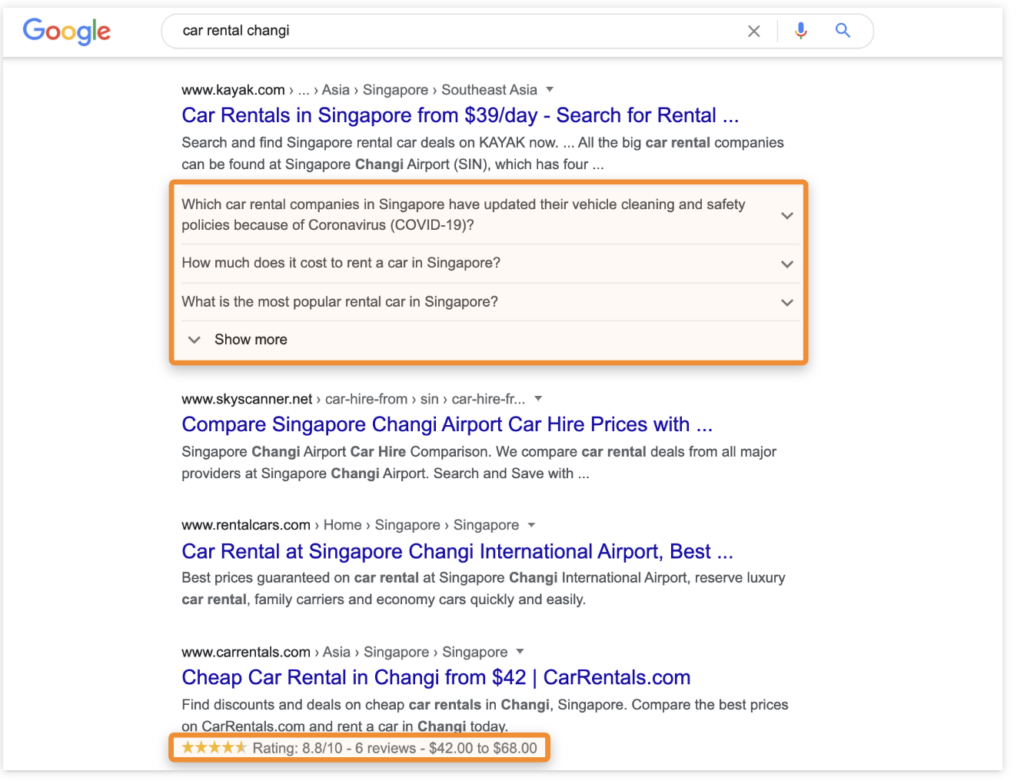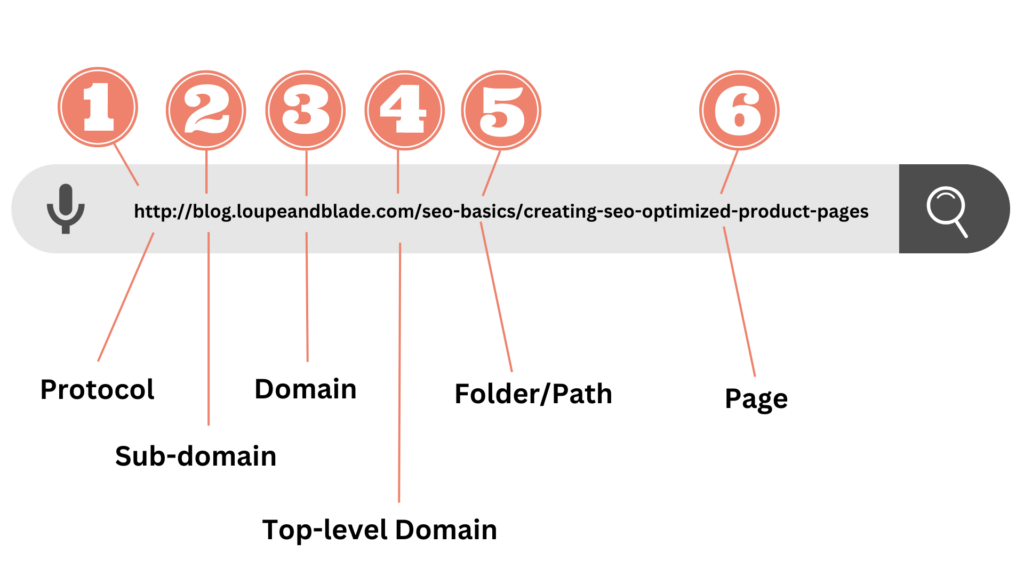Having a strong online presence is crucial for the success of any business, especially those operating in the e-commerce space. Search engine optimization (SEO) plays a vital role in driving organic traffic to your website and increasing brand awareness by potential customers.
Whether you have a long-time e-commerce business or a new online store, understanding the fundamentals of SEO and how to optimize your product pages can make a significant difference in your online visibility and sales. This beginner's guide to SEO will provide you with essential insights and step-by-step instructions on creating product pages that are visually appealing and optimized for search engines.
We will walk you through various aspects of product page optimization, from choosing the right primary keyword to crafting compelling product descriptions. You will learn how to optimize title tags and meta descriptions to increase click-through rates and the importance of internal linking for higher rankings. Additionally, we'll explore the power of a rich snippets product and schema markup in enhancing the visibility of your products in search engine results.
So, whether you're selling fashion apparel, electronics, or handmade crafts, optimizing your product pages for SEO is essential to attract targeted traffic, improve your search engine rankings, and ultimately drive more conversions. It’s time to dive into the world of an e-commerce SEO strategy and unlock the potential of your e-commerce business.
Develop Focus Pages for Your SEO Strategy
Focus pages are more important than you think when creating and executing an effective SEO strategy. A focus page is a specific web page optimized to target a particular keyword or topic.
This central page collects all the relevant content and information related to that keyword or topic on your website. By strategically optimizing focus pages, you can significantly improve your search engine rankings and attract more organic traffic to your site.
One concept that can guide the creation of focus pages is the Pareto principle, also known as the 80/20 rule. This principle states that roughly 80% of the results come from 20% of your creations. When applied to SEO, it means that a significant portion of your website's traffic and conversions will come from a small percentage of your web pages.
Optimizing category pages is essential because they are the foundation of your product offerings. These more general pages often target broader keywords that attract a large volume of searches. By carefully selecting relevant keywords and optimizing the category page content, meta tags, and headings, you can increase the visibility of your category pages in search engine results and attract more potential customers to explore your product offerings.
Work to optimize product titles, descriptions, images, and user-generated reviews to provide comprehensive and persuasive information to potential buyers.
What should a focus page include? Aim to answer common questions, provide in-depth information, and offer unique insights that set you apart from competitors. This will improve your chances of ranking higher in search results and increase your credibility as a reliable and authoritative website.
Remember to track the performance of your focus pages using analytics tools. Take note of key metrics such as organic traffic, keyword rankings, conversion rates, and user engagement to assess the effectiveness of your optimization efforts. Use this data to update and revamp your SEO strategy, continually making data-driven decisions to build better SEO-optimized product pages.
When it comes to optimizing product pages, there are several key factors to consider. Let's explore the best practices for creating SEO-optimized product pages.
Choose the Right Primary Keyword
To begin, aligning the product name with the primary keyword is essential. Consider search queries that are commonly used by your target audience, such as brand name, color, size, and SKU. By incorporating these keywords strategically, you can enhance the visibility of your product page. Let's take an example to illustrate this concept further.

Imagine you're selling a comfortable mattress. The primary keyword could be "best mattress 2023." In addition to the primary keyword, you can include related terms like "luxurious mattress," "cooling technology," and other relevant descriptors. Remember to hone in on what makes your product unique compared to others in the industry.
Title Tag Optimization
The title tag plays a vital role in attracting clicks and improving click-through rates (CTR). It's important to optimize the title tag by including the primary keyword and brand name. Consider the optimal length of the title tag, ensuring it is concise yet descriptive. Let's continue with our mattress example:
Title Tag: "Best Mattress 2023 - XYZ Brand | Premium Comfort"
In this one tag, you provide all the information the customer needs. They can stop their search because they know clicking on your website will provide an answer to their search query.
Meta Description Optimization
The meta description also influences CTR. Craft a compelling meta description that includes the product's unique selling points. Keep the length within the recommended limits and consider incorporating the primary keyword naturally. Here's an example using our mattress:
Meta Description: "Discover the best mattress of 2023 - XYZ Brand. Experience a restful night in luxury and comfort with our premium mattresses. Order now and sign up for a future of sweet dreams."
Write Intriguing Product Descriptions
Optimizing the product description is crucial for SEO and providing customers with valuable information. Researching the search engine results pages (SERPs) can help identify whether users seek more descriptive product pages. Tailor the product description accordingly, highlighting key features, benefits, and unique selling points. Let's continue with our mattress example:
Product Description: "Experience the next level of sleeping soundly with the XYZ Brand mattress. This premium mattress is made from organic cotton, eco-friendly padding, and a lush pillowtop and offers customizable firmness. Get the best night’s sleep with our premium mattresses."
Internal Linking Strategy Development
Internal linking plays a significant role in SEO, particularly for product pages. It helps establish the importance of specific products to search engines, helping with higher rankings.
Implement a comprehensive internal linking strategy by including links from the home page, pre-footer, navigation, related products, and top-selling products. Connect all pages within your site so that you do not have any orphan pages that cannot be reached through other pages on your website.
Beware of Cannibalization
Cannibalization occurs when multiple internal pages compete for the same keyword or topic. You do not want to compete with your own page. This can lead to confusion for search engines. To address this, utilize canonical tags to flag the preferred version of a page. For example, if you have multiple variations of the same mattress, such as the "plush mattress" in different colors, you can use canonical tags to avoid cannibalization issues.
Schema Markup Optimization
Schema markup is a powerful tool that allows search engines to understand the content and context of your web pages better. By implementing schema markup, you can increase your website's visibility in search engine results. When you google rich snippets products, you will find products that provide valuable information without having to click through.
Here are some key benefits of schema markup:

Product Snippets for Enhanced CTR
By adding product snippets to your e-commerce website, you can provide users with informative details about your products in search engine results. Improve click-through rates (CTR) and drive more targeted traffic to your product pages with product snippets.
For example, if you're selling a mattress, the schema product snippet can display essential details such as price, availability, and customer ratings. Make sure to include high-quality images to capture users' attention.
FAQs for Better UX and CTR
Including frequently asked questions (FAQs) snippets on your product pages can help address common user queries and provide valuable information upfront. This not only improves the user experience but also increases the likelihood of users clicking on your link.
For instance, if you're selling a fitness tracker, adding FAQ snippets can cover topics like battery life, waterproof capabilities, and compatibility with different devices. Remember to include relevant images alongside the FAQs for better engagement.
Breadcrumb Snippets for Better UX
Breadcrumb snippets display the categorized structure of your website's pages, making it easier for users to understand the whole picture of your website without missing anything. By implementing breadcrumb snippets, you enhance user experience and improve the likelihood of users exploring other pages on your website. For instance, if you're selling clothing, adding breadcrumb snippets can show the user's path from the homepage to the specific product category.
Structured Data Testing Tool for Error-free Implementation
To ensure the accurate implementation of the schema for e-commerce markup, it's essential to use a structured data testing tool. This tool validates your markup and identifies any errors or issues that may adversely impact search results. These tests will help you determine what to tweak in your strategy to yield even better results.
Encourage Users to Find Additional Products
In addition to optimizing individual product pages, it's important to provide users with opportunities to discover related or complementary products. By implementing features such as "People also viewed," "Similar products," "Related products," "Customer favorites," or "New arrivals" sections on your product pages, you can spark interest in your potential customer. From an SEO perspective, this can lead to higher engagement metrics and improved rankings.
URL Optimization

URL optimization is a crucial aspect of SEO that can significantly impact your click-through rates (CTR) and overall search engine visibility. When it comes to product pages, having a well-optimized URL structure can improve the user experience, make your pages more relevant to search queries, and ultimately drive more organic traffic to your website.
An optimized URL should be concise, descriptive, and include relevant keywords that accurately represent the page’s content. Let's take an example of a product: a hiking backpack called "AdventurePro 5000."
An ineffective URL for this product could be something like:
www.examplestore.com/product?id=12345
This URL does not provide any meaningful information about the product, making it less likely to attract clicks from users who are searching for hiking backpacks. On the other hand, an optimized URL for the same product could look like this:
www.examplestore.com/hiking-backpacks/adventurepro-5000
In this example, the URL includes relevant keywords such as "hiking backpacks" and the product name "adventurepro-5000." When someone clicks on this descriptive link, they know what to expect.
To optimize your URLs for product pages, consider the following tips:
1. Use descriptive keywords: Include relevant keywords to describe the product or category in the URL. This helps search engines understand the context of the page and improves its visibility in search results.
2. Keep it short: Aim for shorter URLs that make sense and are easy to remember. Avoid using complicated characters or numbers in the URL structure.
3. Use hyphens to separate words: Hyphens are preferred over underscores or spaces to separate words in the URL. This improves readability for both search engines and users.
4. Avoid using dynamic parameters: Instead, opt for static URLs that are more search engine-friendly and easier to index.
5. Implement canonical tags: As mentioned above, use canonical tags to specify the preferred URL for similar pages. This ensures that search engines understand which version to prioritize in their rankings.
By optimizing your product page URLs, you increase the chances of attracting relevant organic traffic and improve the overall user experience. Remember, search engines and users appreciate clear, keyword-rich URLs that accurately represent the content they can expect to find on your website.
High-Quality Images for Better Conversion Rates
Images are a huge part of enhancing the user experience and can have a positive impact on SEO. Optimizing images on your website not only improves page load times but also helps search engines understand the relevance and context of your content. Here are some key aspects to consider when it comes to image optimization for SEO.
Firstly, the file size of your images impacts page loading speed. Large image files can slow down your website, leading to a poor user experience and lower search engine rankings. It's essential to compress and resize your images without compromising their quality. Image compression tools or plugins can help reduce file sizes while maintaining visual integrity.
Secondly, alt tags (alternative text) are crucial for SEO. Alt tags provide a text description of the image content not only for search engines but also for visually impaired users. Descriptive and relevant keywords in your alt tags can help search engines understand the context and improve your image's visibility in search results.
Another important aspect is choosing the right file name for your images. Instead of generic names like "IMG_001.jpg," use descriptive file names that include your keywords. For example, if you have an image of a red hiking backpack, a suitable file name could be "red-hiking-backpack.jpg." This increases the chances of your image showing up in search results.
Additionally, the placement of images within your content can impact SEO. Place images near the relevant text to enhance user experience and engagement. It's also beneficial to use responsive design techniques to ensure images display correctly on various devices and screen sizes.
Lastly, optimizing the image's alt text, title, and caption fields can provide additional context and improve SEO. While these elements may not directly impact search engine rankings, they contribute to the user experience.
Web Page Speed for Enhanced User Experience
Web page speed is a critical factor that affects user experience and plays a significant role in SEO rankings. Page speed is a ranking factor because search engines want to return fast and efficient results. A slow-loading website can also result in quick exits from your site and lower user engagement, negatively impacting your online visibility and conversions. Therefore, optimizing your web page speed is essential for both SEO and user satisfaction.
As a general guideline, it is recommended to aim for a page load time of under three seconds. Research shows that users tend to exit websites that take longer to load, so optimizing your website for speed is crucial.
Use a page speed tool to identify your website weaknesses when it comes to loading speed. To optimize web page speed, beginners can start by minifying and compressing JavaScript and CSS files. Minifying involves removing unnecessary characters and spaces from the code, reducing file sizes, and improving load times. You can also compress these files to further decrease their size without compromising functionality.
Another effective technique is browser caching, which allows web browsers to store certain elements of your website locally on a user's device. This eliminates the need to reload all the resources when a user revisits the site, resulting in faster page loading times. Implementing caching mechanisms, such as setting appropriate cache headers or using caching plugins, can significantly improve web page speed.
Optimizing images, as mentioned before, is crucial for web page speed. Compress images without sacrificing quality.
How much does it matter? Understanding the intricacies of loading speed optimization and its relationship with SEO can help you create a better strategy and deliver improved results.
Sitemap File Update
A sitemap is a file that serves as a roadmap for search engines, providing valuable information about your website's structure and organization. It lists all the pages on your website and helps search engines understand the relationships between them. Providing an updated and well-organized sitemap is crucial for ensuring that search engines can easily index your web pages.
Whenever you publish new product pages or make significant updates to existing ones, you must update your sitemap accordingly. Then search engines will know about the new or modified pages, increasing the chances of them being crawled and indexed promptly.
Organizing your sitemap in the best possible way helps search engines navigate and understand your website more efficiently. Here are some best practices for organizing your sitemap file:
1. Use XML Format: Sitemaps are typically created in XML format, which is easily readable by search engines. This format lets you provide essential details about each page, such as the URL, last modification date, and priority.
2. Group Similar Pages: Group similar pages together in your sitemap to indicate their relationship and hierarchy. For example, you can group product pages under a "Products" category and blog posts under a "Blog" category. This helps search engines understand the content structure of your website.
3. Follow a Logical Structure: Arrange your sitemap in a logical order that reflects the organization of your website. Start with the main categories or sections. Then list the individual pages within each category.
4. Include Metadata: Provide additional metadata for each page in your sitemap, such as the page's priority and change frequency. The priority indicates the relative importance of a page compared to other pages on your site, while the change frequency indicates how often the page is expected to be updated.
5. Update Frequency: Set the update frequency attribute for each page in your sitemap based on how often the content of the page changes. This information helps search engines determine how frequently they should revisit the page for indexing.
6. Submit to Search Engines: Once you have updated and organized your sitemap file, submit it to search engines through their respective webmaster tools. This ensures that search engines are aware of your sitemap and can efficiently crawl and index your web pages.
Regularly updating and organizing your sitemap is essential to maintaining a crawlable website. By keeping your sitemap up to date, you help search engines discover your new and updated content, improving its visibility in search engine results. Additionally, an organized sitemap enables search engines to understand the structure of your website, improving the overall indexing process.
Conclusion
In conclusion, SEO-optimized product pages are essential to increasing your online visibility and attracting organic traffic to your e-commerce website.
While reading this rich snippets article, learn how to implement rich snippets and schema markup to help enhance the appearance of your product pages in search engine results, inviting users to click through to your website. Take advantage of structured data and incorporate elements like product snippets, FAQs, and breadcrumb snippets to make your pages more engaging and informative.
Remember that SEO is an ongoing process, and staying updated about the latest trends and algorithm changes is essential. Continuously refine your SEO strategies, adapt to evolving search engine guidelines, and keep improving the user experience on your product pages to stay competitive in the industry.
Consider Hiring an SEO Agency
If you're feeling overwhelmed or unsure about implementing e-commerce SEO strategies for your website, you may consider hiring an SEO agency. We can provide valuable expertise and guidance to help you navigate the complex world of SEO for products. Before hiring an agency, consider the track record, client reviews, and the specific expertise you need. Our team at Loupe & Blade comprises a trusted SEO agency that can teach you the e-commerce SEO best practices. Contact us today to learn more about how we can help your business thrive online.
By implementing these e-commerce SEO tips and strategies, you can optimize your SEO for e-commerce product pages for better visibility, increased traffic, and higher conversions. Stay consistent, monitor your performance, and adapt to changes in search engine algorithms to maintain a competitive edge in the online marketplace. Loupe & Blade can help.

No Comments.